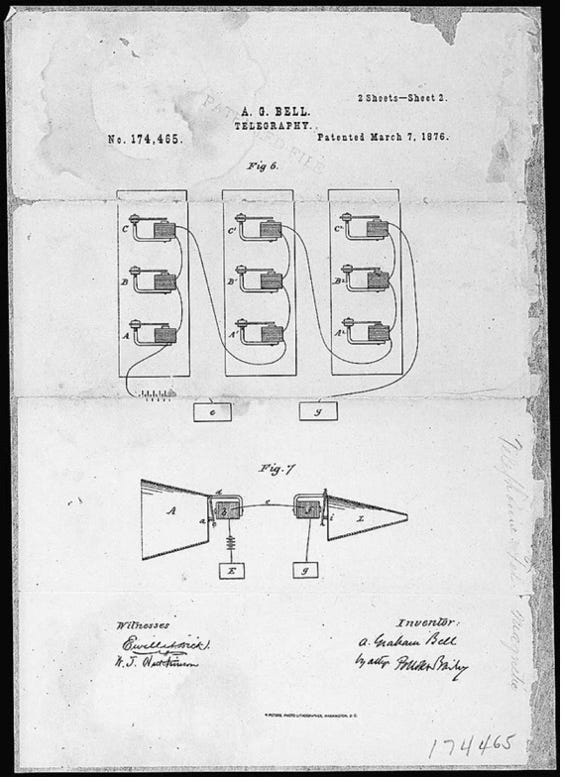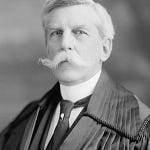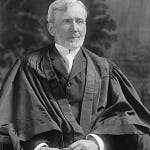This Day in Legal History: Bell and Gray File Patents
On February 14, 1876, both Alexander Graham Bell and Elisha Gray filed patent applications for the invention of the telephone, setting off one of the most famous legal battles in U.S. history. Bell’s lawyer submitted his paperwork to the U.S. Patent Office just hours before Gray’s, leading to a dispute over who truly invented the device. Gray’s filing was a "caveat," an intention to patent, while Bell’s was a full application, giving him a legal advantage. When the patent was granted to Bell on March 7, 1876, Gray challenged it, arguing that Bell had improperly incorporated elements of Gray’s liquid transmitter design.
The controversy led to numerous lawsuits, with Gray and others accusing Bell of fraud and claiming he had seen Gray’s filing before finalizing his own. Despite these challenges, the courts consistently ruled in Bell’s favor, affirming his rights to the telephone patent. This legal victory gave Bell’s company, later known as AT&T, control over the rapidly growing telephone industry. The case highlighted issues of patent timing, intellectual property rights, and legal strategy in technological innovation.
The Bell-Gray dispute remains a landmark moment in patent law, demonstrating how the slightest timing difference can determine the outcome of major technological advancements. It also underscored the competitive nature of the late 19th-century invention boom, where multiple inventors often worked on similar ideas simultaneously.
Democratic attorneys general from 16 states issued guidance defending diversity, equity, inclusion, and accessibility (DEI) programs against recent executive orders from former President Trump. Led by Massachusetts AG Andrea Joy Campbell and Illinois AG Kwame Raoul, they argued that DEI initiatives remain legal under existing anti-discrimination laws, including Title VII of the 1964 Civil Rights Act. The Trump administration's orders call for eliminating DEI efforts from federal agencies and scrutinizing private-sector programs, conflating lawful diversity policies with illegal hiring preferences, the AGs said.
Major corporations like Google and Amazon have adjusted or rebranded their DEI initiatives in response to legal uncertainty. The guidance clarifies that policies promoting workplace diversity—such as broad recruitment efforts and impact assessments—are legally distinct from unlawful hiring preferences. Courts have long upheld employers' ability to consider the effects of their policies on different groups to prevent discrimination claims.
Meanwhile, Republican AGs, including Missouri’s Andrew Bailey, are pushing businesses to abandon DEI programs. Bailey recently sued Starbucks, accusing the company of violating civil rights laws through its DEI initiatives. The conflicting state-level actions highlight the growing legal and political battle over corporate diversity policies.
Democratic AGs Defend DEI Against ‘Misleading’ Trump Directives
Two federal judges will decide whether Elon Musk’s government cost-cutting team, the Department of Government Efficiency (DOGE), can access sensitive U.S. government systems. Since his appointment by President Trump last month, Musk has led efforts to eliminate wasteful spending, but critics argue his team lacks legal authority to handle Treasury payment systems and sensitive agency data.
Judge Jeannette Vargas in Manhattan will consider a request from Democratic attorneys general to extend a temporary block preventing DOGE from accessing Treasury systems that process trillions in payments. The states argue Musk’s team could misuse personal data and disrupt funding for health clinics, preschools, and climate programs.
In Washington, Judge John Bates will review a separate request from unions seeking to prevent DOGE from accessing records at the Department of Health and Human Services, the Labor Department, and the Consumer Financial Protection Bureau. Bates previously ruled in favor of the Trump administration but will now reconsider after the unions amended their lawsuit.
Democratic AGs have also filed a separate lawsuit claiming Musk’s appointment is unconstitutional and seeking to block him from making personnel decisions or canceling contracts. While courts have blocked several of Trump’s initiatives, his administration has continued firing government workers and cutting foreign aid, mostly targeting programs opposed by conservatives.
Musk's DOGE team: Judges to consider barring it from US government systems | Reuters
A federal judge has ordered the Trump administration to restore funding for hundreds of foreign aid contractors affected by a 90-day funding freeze. The ruling temporarily blocks the administration from canceling foreign aid contracts and grants that were in place before Trump took office on January 20.
The decision came in response to a lawsuit filed by two health organizations that rely on U.S. funding for overseas programs. The Trump administration had halted all foreign aid payments, claiming the pause was necessary to review program efficiency and alignment with policy priorities. However, Judge Amir Ali ruled that the government had not provided a rational justification for the sweeping suspension, which disrupted agreements with businesses, nonprofits, and organizations worldwide.
Trump has also ordered federal agencies to prepare for major job cuts, leading to layoffs among government workers without full job protections. His administration has already removed or sidelined hundreds of civil servants and top officials, part of a broader effort to reshape the federal workforce and consolidate power among political allies.
Judge orders US to restore funds for foreign aid programs | Reuters
A federal judge has ordered the release of Supreme Court advocate Tom Goldstein, three days after he was jailed for allegedly violating pretrial release conditions in a tax fraud case. Goldstein, a prominent appellate lawyer and co-founder of SCOTUSblog, was indicted last month on 22 counts of tax evasion related to his high-stakes poker winnings and alleged misuse of law firm funds to cover debts.
Chief U.S. Magistrate Judge Timothy Sullivan ruled that there was insufficient evidence to keep Goldstein incarcerated for allegedly concealing cryptocurrency transactions. However, the judge imposed new restrictions, including monitoring his internet use and prohibiting cryptocurrency transfers.
Prosecutors claimed Goldstein secretly moved millions in crypto after his initial release, prompting his second arrest. Goldstein argued the transactions occurred in 2023 and that he did not own the accounts in question. While the judge found Goldstein’s evidence created enough doubt to justify his release, he also suggested Goldstein may still have access to hidden funds that could enable him to flee. Goldstein has pleaded not guilty, and his legal team maintains the government's case lacks proof.
Supreme Court veteran Goldstein wins release again in tax crimes case | Reuters
This week’s closing theme is by Gustav Mahler.
Gustav Mahler (1860–1911) was a visionary composer and conductor whose symphonies bridged the late Romantic and early modern eras. Known for his deeply personal and expansive works, Mahler infused his music with themes of life, death, and transcendence. His Symphony No. 2, often called the Resurrection Symphony, is one of his most ambitious compositions, blending massive orchestral forces with choral elements to explore the journey from despair to spiritual renewal.
The symphony’s fifth and final movement, Im Tempo des Scherzo – Aufersteh’n, is a dramatic culmination of the work’s themes. It begins in chaos, with the orchestra depicting the terror of the apocalypse, before gradually moving toward light and resolution. The music builds in intensity until the choir enters softly, singing the text of Friedrich Klopstock’s Resurrection Ode, which speaks of rising again after death. Mahler expands on these words, adding his own lines about redemption and eternal life.
The movement swells to one of the most powerful climaxes in symphonic history, with soaring brass, thunderous percussion, and a triumphant chorus proclaiming victory over death. The final moments are a breathtaking ascent, as the music dissolves into radiant serenity. This movement is more than just a finale; it is an emotional and philosophical journey, offering a sense of transcendence that has resonated with audiences for over a century.
Without further ado, Gustav Mahler’s Symphony No. 2, the fifth and final movement – Im Tempo des Scherzo.














